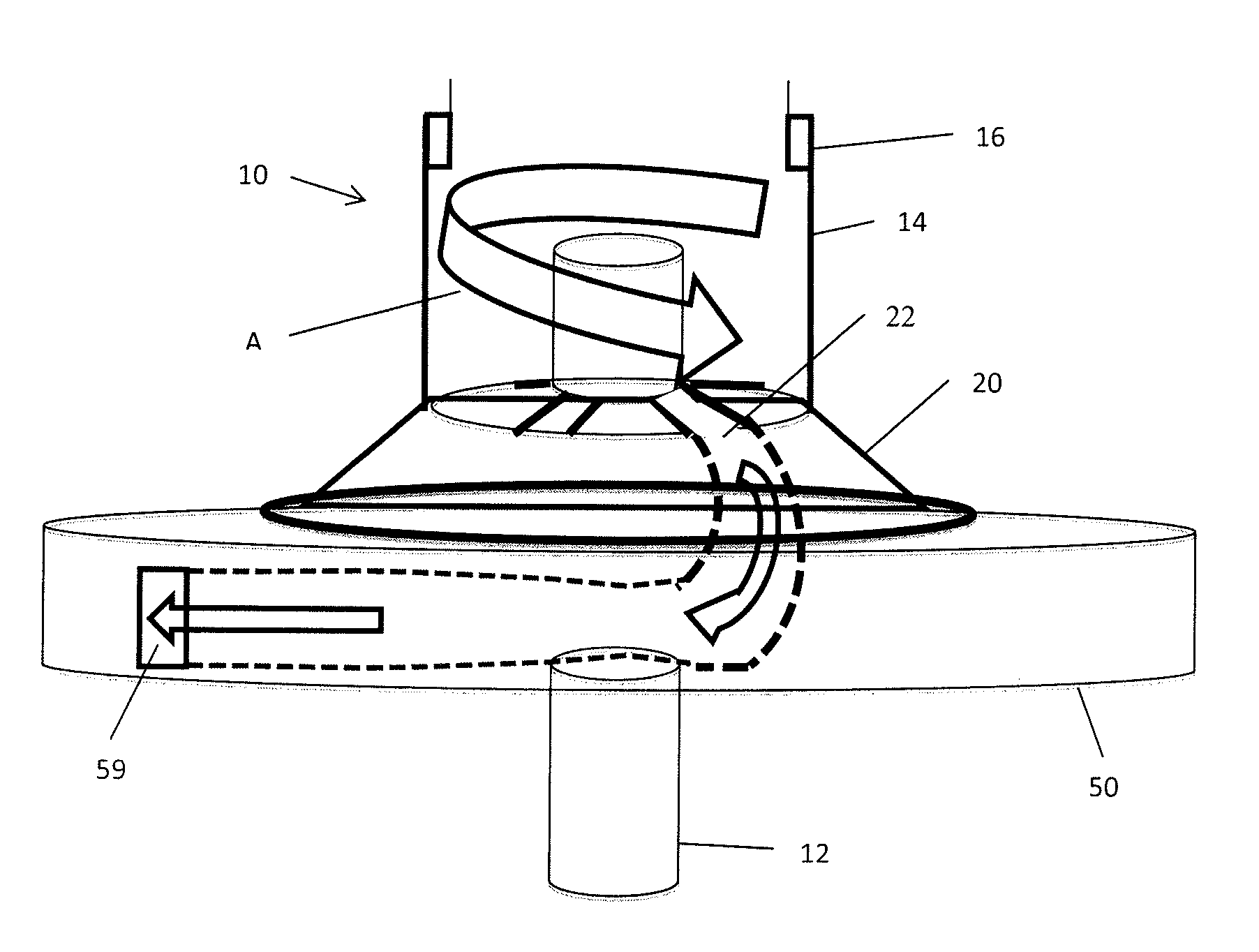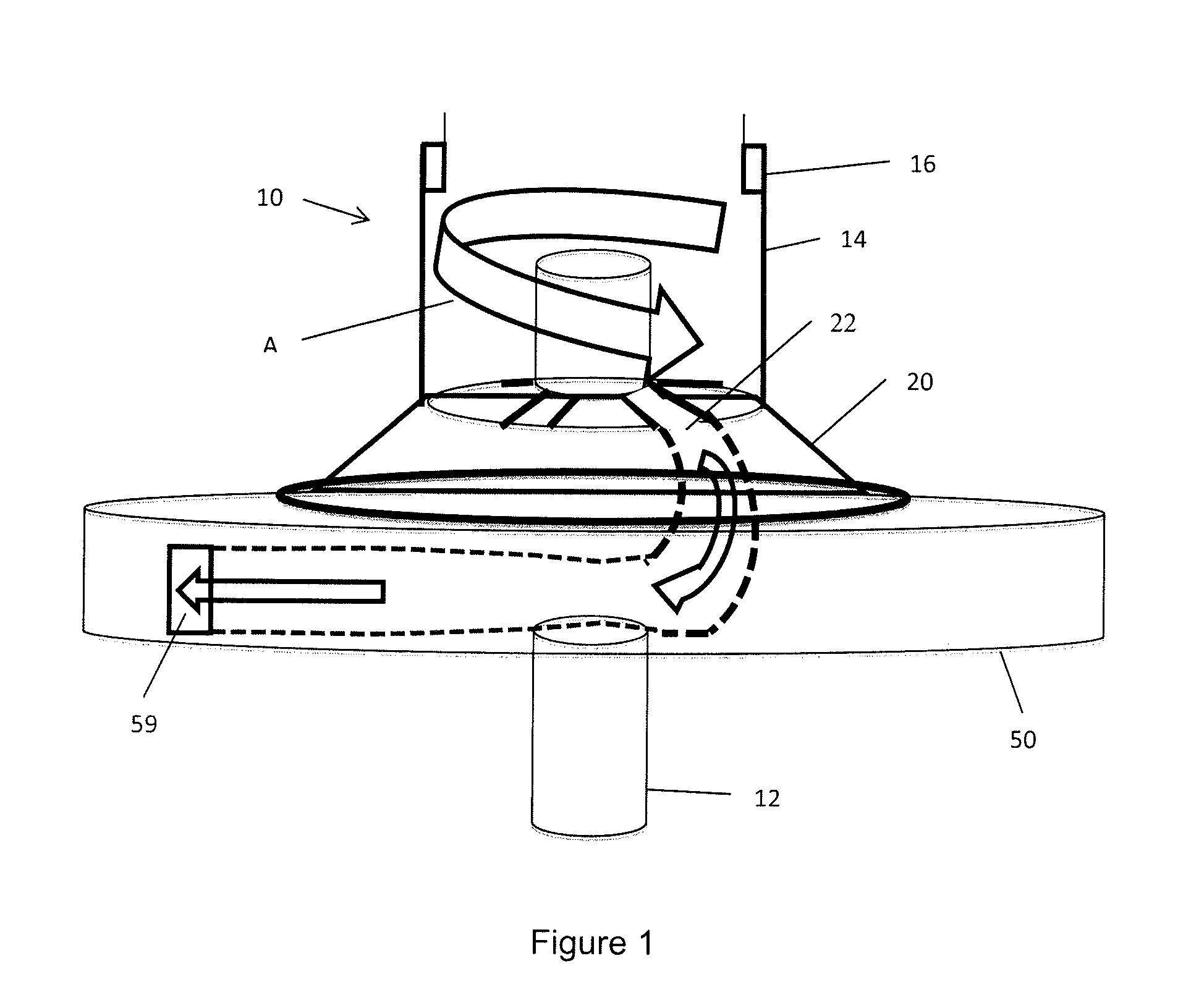Most notably, inventors from da Vinci to de Laval to Pelton have all noted that for maximum
water wheel, the fluid must (1) enter slowly and evenly, or else losses will occur before the power can be extracted, (2) proceed through smooth, gradual steps, or else the power will be lost to the surroundings instead of being harvested, and (3) exit at essentially no velocity, because any residual velocity results in
kinetic energy that is outside of the
machine and thus cannot be converted to useful power.
Unfortunately, applying the above general relationship of no
residual energy in the exhaust requires that the exhaust velocity must equal the
jet velocity.
Despite this inherent simplicity, the reaction turbine has never been successfully utilized for power generation.
The limitations follow from the basic design.
First, feeding in water is obviously difficult with limited
machining capability.
Ideally, this progression should be smooth, but with a
spinning mixture of liquid and gas, combined with exits that move relative to the gas (no internal partitions), the internal process is complicated indeed, leading to significant losses.
It is therefore not surprising that the Hero turbine produces no useful power.
Similar problems persist in more modern attempts.
Specifically, reaction turbines lack the delicate blades that limit conventional turbines.
The first problem with this relationship is that Sohre specifies a supersonic tip velocity, and shows the
water jet at about half the tip
radius.
This is simply not practical for multiple reasons: (1) water is not compressible, and therefore does not follow the laws of
compressible flow that govern the
gas phase—the gas and water components of the unit are therefore not compatible, (2) water will be subject to pump work, as described below, and (3) the amount of water in any practical two phase
system is inadequate to form a useful jet—the losses would be excessive for a small
diameter nozzle, but a large
diameter nozzle would be inadequate to serve as a plug for the steam.
One problem is that the above general relationship states that any residual velocity decreases the efficiency.
Reaction turbines, however, produce no power from
radial velocity—only tangential (or angular) velocity yields useful power.
The above simple relation v=r ω, however, says that such a rapid speed increase is simply not possible while maintaining the specified tangential flow equations.
Finally, progressing towards the axis reveals one last problem that is quite instructive:
mass conservation.
The fundamental problem here is that compressible flows, such as air or steam at
high velocity, have properties that limit the types of flow that are possible.
Therefore, Sohre's unit violates the above
mass flow rate law: it is simply not physically possible for any given
mass flow rate to satisfy the contradictory conditions in the Sohre geometry.
Unfortunately, the Fabris unit begins with a problem already cited by U.S. Pat. No. 4,336,039 (Sohre): limited exhaust
nozzle arrangements.
Most of the disc is therefore wasted space.
Such an arrangement is simply not competitive on a mass and volume basis with conventional turbines.
Another problem with the Fabris unit is the inlet zone at the axis.
Like the Sohre unit without partitions, this zone is not partitioned, and therefore suffers from the unequal distribution problems that date back to Hero.
Furthermore, the Fabris unit also suffers from excessive efficiency losses due to high inlet velocities, as discussed more fully below.
However, the
computer program that Fabris uses to calculate these effects has flaws.
The difficulty here is that Fabris has omitted crucial terms in the
computational model: losses and the work done by the gas on the rotor in the tangential direction prior to the exit.
Because these terms decrease the exit velocity in the rotating case, the Fabris
algorithm of mandated identical exit velocities invariably converges to the wrong solution.
Such large discrepancies are simply unacceptable in turbine work, where variations of even fractions of a percent are important.
 Login to View More
Login to View More  Login to View More
Login to View More 


